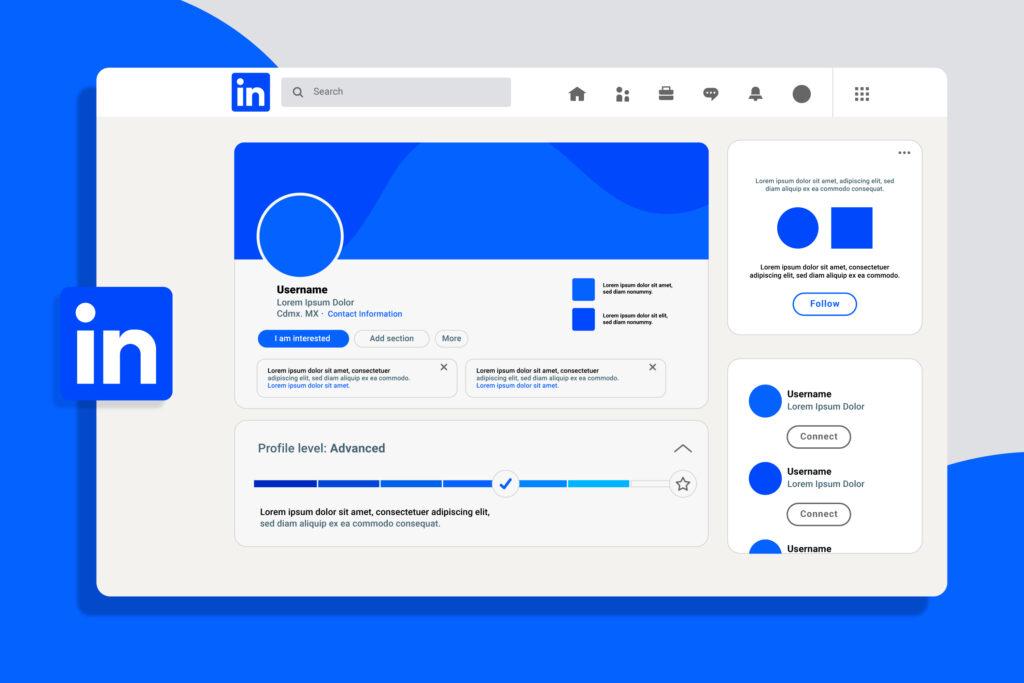Your exposure will increase, you’ll make more worthwhile connections, and doors to new opportunities will open up if you create an engaging title and summary, highlight your expertise and accomplishments, develop a strong network, and optimise your content for search engines.
Having an optimised LinkedIn profile is crucial for creating a lasting impression, attracting prospects, and establishing trust. With millions of users and a focus on professional connections. In order to increase your visibility and realise your full commercial potential, we’ll look at tactics for optimising your LinkedIn profile in this post.
1. Crafting a Compelling Headline:
Your headline is one of the first things people see on your LinkedIn profile, so it’s crucial to make it attention-grabbing and informative.
a. Clear and Concise:
Your headline should clearly state who you are as a professional and what you know. Use industry-specific keywords and emphasise your unique selling offer. Consider something like “Digital Marketing Specialist | SEO & Content Strategy” in place of the generic “Marketing Professional,” for instance.
b. Showcasing Value:
Think about inserting a sentence that explains the benefit you can provide to potential contacts. This might be a succinct summary of your successes or the results you’ve produced in your profession. Take the phrase “Helping Businesses Drive Revenue Growth through Data-Driven Marketing Strategies.”
2. Writing a Compelling Summary:
Your LinkedIn summary provides an opportunity to tell your professional story and engage visitors.
a. Engaging Introduction:
Start with an attention-grabbing first paragraph to draw readers in and pique their interest. Share your enthusiasm, knowledge, and special method of working. Be sure to keep it brief and interesting.
b. Highlighting Achievements and Skills:
Highlight your most important achievements, talents, and areas of expertise in the summary section. Give instances of how you’ve improved past jobs or initiatives with a focus on measurable results. By doing this, credibility and trust are established.
c. Including a Call to Action:
With a call to action at the end, encourage readers to connect with you, check out your work, or get in touch if they want to work together. This promotes participation and may result in beneficial contacts and chances.
3. Showcasing Experience and Accomplishments:
Your experience section is where you can showcase your professional journey and highlight your accomplishments.
a. Detailed Descriptions:
List your prior duties and responsibilities in clear, simple terms. To emphasise your most important accomplishments, projects, or efforts, use bullet points. Put your attention on measurable outcomes, such as higher sales, cost reductions, or process improvements.
b. Incorporating Multimedia:
You can include multimedia components in your LinkedIn profile. By incorporating pertinent presentations, videos, or links to your portfolio, make use of this tool. This makes your skill- and capability-demonstration more interesting and interactive.
c. Requesting Recommendations:
Ask for references on LinkedIn from co-workers, clients, or superiors. These endorsements give your profile more authority and serve as verifiable evidence of your skills and work ethic.
4. Building a Strong Network:
LinkedIn is a networking platform, so actively building and nurturing your connections is crucial for success.
a. Connecting Strategically:
Find experts in your field, influential people, potential partners, and customers. Personalise connection requests by bringing up relationships or shared interests.
b. Engaging with Content:
Participate in debates, provide insightful stuff, and reply to postings from your contacts. This raises your visibility inside your network, establishes your expertise, and helps you forge relationships.
c. Joining Relevant Groups:
Join LinkedIn groups that are relevant to your field or interests. Discuss, exchange ideas, and establish connections with other professionals who share your interests. Your network will grow as a result, and you’ll be exposed to fresh possibilities and viewpoints.
5. Optimising for Keywords and Searchability:
To increase your visibility on LinkedIn, it’s important to optimize your profile for relevant keywords.
a. Strategic Keyword Placement:
Include natural keyword placement all across your profile, paying particular attention to the title, summary, and experience parts. This increases the likelihood that you will show up in search results when employers, potential clients, or partners are looking for particular talents or knowledge.
b. Leveraging Skills and Endorsements:
List your qualifications and ask for recommendations from others. This not only draws attention to your areas of expertise but also raises the visibility of your profile in LinkedIn’s search algorithm.
c. Utilizing Relevant Hashtags:
To make your material more discoverable, add pertinent hashtags to your articles and comments. To reach a wider audience, carefully consider the trending hashtags in your business.
Making the most of LinkedIn’s potential for business success requires optimising your profile. Maintaining and updating your profile on a regular basis helps you stay current and utilise LinkedIn professional networking features to their fullest potential.



